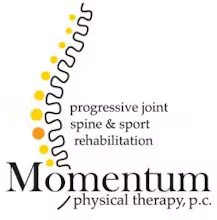The Federation of State Boards of Physical Therapy has issued a paper which supports the position that dry needling is within the scope of practice for a physical therapist. Click Here to view document.
What is Dry Needling Trigger Point Injection
Dry Needling involves multiple advances of a filament needle into the muscle in the region of a “Trigger Point’. The aim of Dry Needling is to achieve a local twitch response to release muscle tension and pain. Dry needling is an effective treatment for chronic pain of neuropathic origin with very few side effects. This technique is unequalled in finding and eliminating neuromuscular dysfunction that leads to pain and functional deficits.
The needle used is very thin and most subjects do not even feel it penetrate the skin. A healthy muscle feels very little discomfort with insertion of this needle. However if the muscle is sensitive and shortened or has active trigger points within it, the subject will feel a sensation like a muscle cramp – ‘the twitch response’. The patient also may feel a reproduction of “their” pain which is a helpful diagnostic indicator for the practitioner attempting to diagnose the cause of the patient’s symptoms. Patients soon learn to recognize and even welcome this sensation as it results in deactivating the trigger point, reducing pain and restoring normal length function to the involved muscle.
What to expect after receiving Trigger Point Dry Needling (TDN)
How will I feel after a session of TDN?
- You may feel sore immediately after treatment in the area of the body you were treated, this is normal but does not always occur. It can also take a few hours or the next day before you feel soreness. The soreness may vary depending on the area of the body that was treated as well as varies person to person, but typically it feels like you had an intense workout at the gym. Soreness typically lasts 24-48 hours. If soreness continues beyond this please contact your provider.
- It is common to have bruising after treatment; some areas are more likely than others. Some common areas are shoulders, base of neck, head and face, arms and legs. Large bruising rarely occurs, but can. Use ice to help decrease the bruising and if you feel concern please call your provider.
- It is common to feel tired, nauseous, emotional, giggly or “loopy”, and/or somewhat “out of it” after treatment. This is a normal response that can last up to an hour or two after treatment. If this lasts beyond a day contact your provider as a precaution.
- There are times when treatment may actually make your typical symptoms worse. This is normal. If this continues past the 24 hour – 48 hour window, keep note of it, as this is helpful information and your provider will then adjust your treatment plan based on your report if needed. This does not mean TDN cannot help your condition.
What should I do after treatment, what can I do, and what should I avoid?
- It is highly recommended that you increase your water intake for the next 24 hours after treatment to help avoid soreness.
- It is recommended that you soak in a hot bath or hot tub to help avoid post treatment soreness.
- After treatment you may do the following based on your comfort level, if it hurts or exacerbates your symptoms then stop:
– Work out and/or stretch. – Massage the area. – Use a heating pad. – Avoid ice unless you are icing a bruise, heat is better for muscle soreness. – Drink alcohol, but it is recommended you do not do so excessively. – Take Tylenol, Ibuprofin/Motrin, aspirin, etc. is OK
If you are feeling light headed, having difficulty breathing, having chest pain or any other concerning symptoms after treatment CALL us immediately at (970) 377-1422. If you are unable to get a hold of us, call your physician.




